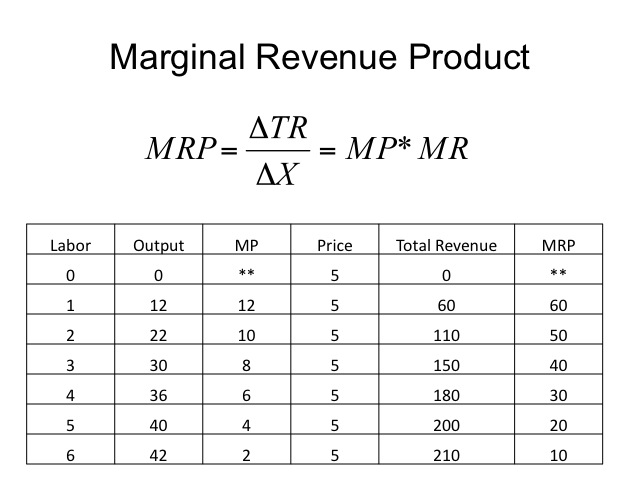

When Average Product is declining, Marginal Product lies below Average Product.When Average Product is rising, Marginal Product lies above Average Product.There exists an interesting relationship between Average Product and Marginal Product. Relationship between Average Product and Marginal Product When the MP becomes zero, Total Product reaches its maximum.When the MP is declining and negative, the Total Product declines.

This continues until the Total product curve reaches its maximum. Thisgiveends the Total product curve a concave shape after the point of inflexion.

When the Marginal Product (MP) increases, the Total Product is also increasing at an increasing rate.It states that when only one variable factor input is allowed to increase and all other inputs are kept constant, the following can be observed: The law of variable proportions is used to explain the relationship between Total Product and Marginal Product. Source: FreeEconHelp Relationship between Marginal Product and Total Product It is defined as the output per unit of factor inputs or the average of the total product per unit of input and can be calculated by dividing the Total Product by the inputs (variable factors).Īverage Product = Total Product/ Units of Variable Factor Input Total Product = Ʃ Marginal Product Average Product Thus, it can also be said that Total Product is the summation of Marginal products at different input levels. Marginal Product = Change in Output/ Change in Input

Thus, we can say that marginal product is the addition to Total Product when an extra factor input is used. The additional output produced as a result of employing an additional unit of the variable factor input is called the Marginal Product. In simple terms, we can define Total Product as the total volume or amount of final output produced by a firm using given inputs in a given period of time. Learn more about Production Function here in more detail. Return to scale and Cobb Douglas Function.Shapes of Total Product, Average Product and Marginal Product.Browse more Topics under Production And Costs Where Q represents the final output and X 1 and X 2 are inputs or factors of production. We normally denote the production function in the form: The function that explains the relationship between physical inputs and physical output (final output) is called the production function.


 0 kommentar(er)
0 kommentar(er)
